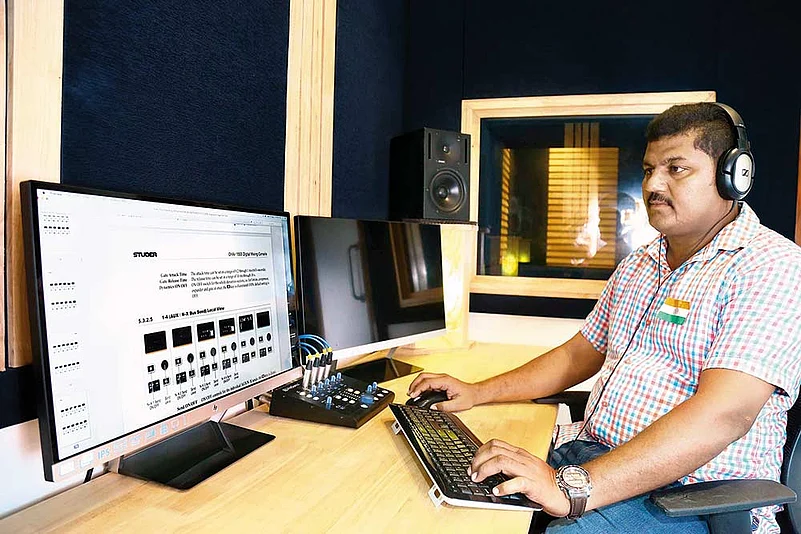The open sea heaved and surged, and John Ravi was helpless—out on a fishing trip, a companion had suffered a heart attack. “Our first response was to give him water to sip. Only later did I learn that it could be counterproductive. Thankfully, the man rallied around sufficiently for us to turn back and rush him to hospital.”
Today, Ravi can tackle a similar emergency with greater assurance—thanks to a doctor’s advice on ‘Kadal Osai’ (Sounds of the Sea) FM station. Later, Ravi attended a Red Cross workshop organised by the channel on how to handle such mid-sea crises. “For fishermen like me Kadal Osai has opened up a new world. We are better equipped not only to handle our boats but our lives too,” he says.
Launched in August 2016 and transmitting out of Rameswaram island, Kadal Osai 90.4 FM is the brainchild of Armstrong Fernando, a fisherman who felt the need for a vibrant community network after the 2014 tsunami. He studied a farmers’ community FM service in Dindigul and decided on a FM station of, by and for fisherfolk. Eschewing a basic set-up—considering its limited geographical reach around Rameswaram island—Armstrong decided to invest in the best. He spent over Rs 2 crore on a state-of-the-art studio, purchased the finest German equipment and gave his reporters two- wheelers and a SUV to scout around the island to peek into fisherfolk’s lives.
“We needed a powerful transmitter, so that fishermen even 10 km out in the sea can listen to our programmes. Better audio quality also makes them feel closer home. Unlike most community FM stations, ours is a 24-hour broadcast, as fishing and related activities go on round the clock,” explains Armstrong.

A fisherwoman avidly listens to Kadal Osai.
The daily broadcast starts with an update on weather, fuel prices, areas for good catch (through satellite information by the fisheries department) and market demand for fish. Then there are useful alerts: for instance, if there is going to be a daylong power cut in the island, so that those out to sea can bring in a reduced haul, as there may not be enough ice to preserve their catch. Similarly, tricks to preserve fuel, information on how trawling damages marine life like turtles and subsidies and facilities offered by the government keep educating fishermen.
The programmes also touch on social conditions of the community. “The practice of marrying off girls once they turn 17 is still prevalent. So we talk about educating girls beyond school; career counsellors talk about college courses suitable for them. In fact, many girls from fishing villages are at the forefront of the clean beaches and anti-pollution campaign and regularly speak on our shows about environment issues,” points out Gayathri Usman, Kadal Osai station head.
Alin, a dry fish-seller, has been a regular listener to many women-centric programmes. “Many of our children were not aware of ‘bad touch’ till an expert explained it. Marriage among close relatives, common in our community, which resulted in birth defects, is slowly becoming a bad word thanks to a systematic campaign by Kadal Osai. After we heard it on the radio our women SHGs too have joined the campaign against it,” she says.
The programme mix keeps youngsters tuned in too. “We highlight the work of young local entrepreneurs; the story of a young girl making and selling sanitary pads increased her business. Similarly, our guide about government job openings has seen youngsters of the area joining the central government and the armed forces. Other than All India Radio, we are probably the only radio station doing this kind of service,” says Armstrong.
Kadal Osai is yet to see profits. Though the local traders who advertise bring in small change, Armstrong is determined to keep it running in spite of a monthly outlay of Rs 2 lakh in salaries for 11 employees and other operational expenses. “I have my income from my quarrying business to support this station, which has now become an integral part of the lives of over 50,000 fisherfolk here,” he says.
By G.C. Shekhar in Chennai
















